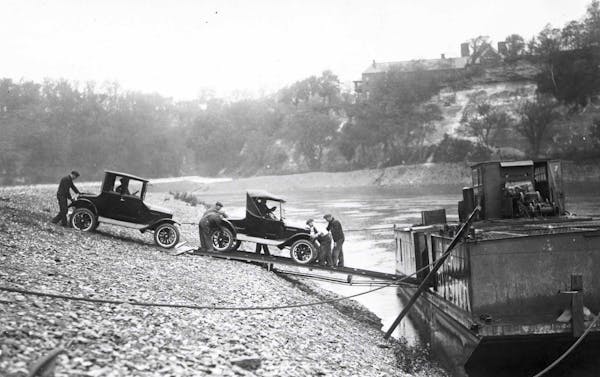Were grizzly bears ever indigenous to Minnesota?
Listen and subscribe to our podcast: Via Apple Podcasts | Spotify | Stitcher
Minnesota, the land of lakes, moose, loons, timber wolves and ... grizzly bears?
The great brown bears, which for decades have survived only near the Rocky Mountains or in national parks, Alaska and Canada, have started to slowly creep back into to more of their native range. Minnesota native Leo Keane, who lives in Montana and has been following news of the bear's recovery there, wondered if that range ever stretched as far east as Minnesota, where smaller black bears have long thrived.
Keane turned to Curious Minnesota, our reader-driven project that answers questions about the 32nd state.
The answer is, yes, grizzly bears once ruled the plains of western Minnesota.
Long before grizzlies were driven into the mountains, they thrived in the plains, with their brown fur blending in almost perfectly with tall prairie grasses, said Spencer Peter, in-house biologist at the North American Bear Center in Ely.
The settlers found that the rich soil of the prairies made for perfect farmland. But farming and grizzly bears did not mix, Peter said.
"As European settlers came in, they killed a lot of them," he said. "It was very similar to bison and wolves, where bounties were placed and a person could make a lot money."
Before European settlement, grizzlies could be found on nearly every part of the continent and as far east as Newfoundland and Labrador, Canada, Peter said.
It's unclear exactly when they were eradicated from Minnesota and, later, the Dakotas. There were reports of Minnesota settlers running into the bears well into the 1800s, Peter said. By 1900, it was clear they were gone.
Black bears, on the other hand, were able to survive in the woods. Much smaller than grizzlies, and with claws built for climbing, black bears have always been at home Minnesota's northern forests.
Grizzly bears grow far too large to climb, Peter said, and their claws evolved to catch and rip into prey rather than into tree trunks.
As the prairies were plowed, grizzly bears retreated into the mountains.
Grizzlies were almost entirely eradicated from the Lower 48 in the early 1900s. They survived in protected areas, such as Yellowstone National Park, and populations started rebounding after they were given endangered species protections in the 1970s.
Yellowstone's grizzly population was down to just 136 in 1975, according to the park. By 2019, it had grown to more than 700, There is now debate in Idaho, Wyoming and Montana over whether to create limited hunting seasons to keep populations where they are.
Grizzly bears will almost certainly never return to Minnesota, where more than 99% of prairies and grasslands have been destroyed, Peter said.
But the fact that they were able to hold on and thrive in strongholds in the West is a success for conservationists.
If you'd like to submit a Curious Minnesota question, fill out the form below:
Read more Curious Minnesota stories:
Why was I-94 built through St. Paul's Rondo neighborhood?
Why does Minneapolis keep planting trees under power lines?
Why are vehicle tabs more expensive in Minnesota than in other states?
Minneapolis plows its alleyways. Why doesn't St. Paul?
Why is Minnesota the only mainland state with an abundance of wolves?
Why is Minnesota more liberal than its neighboring states?



